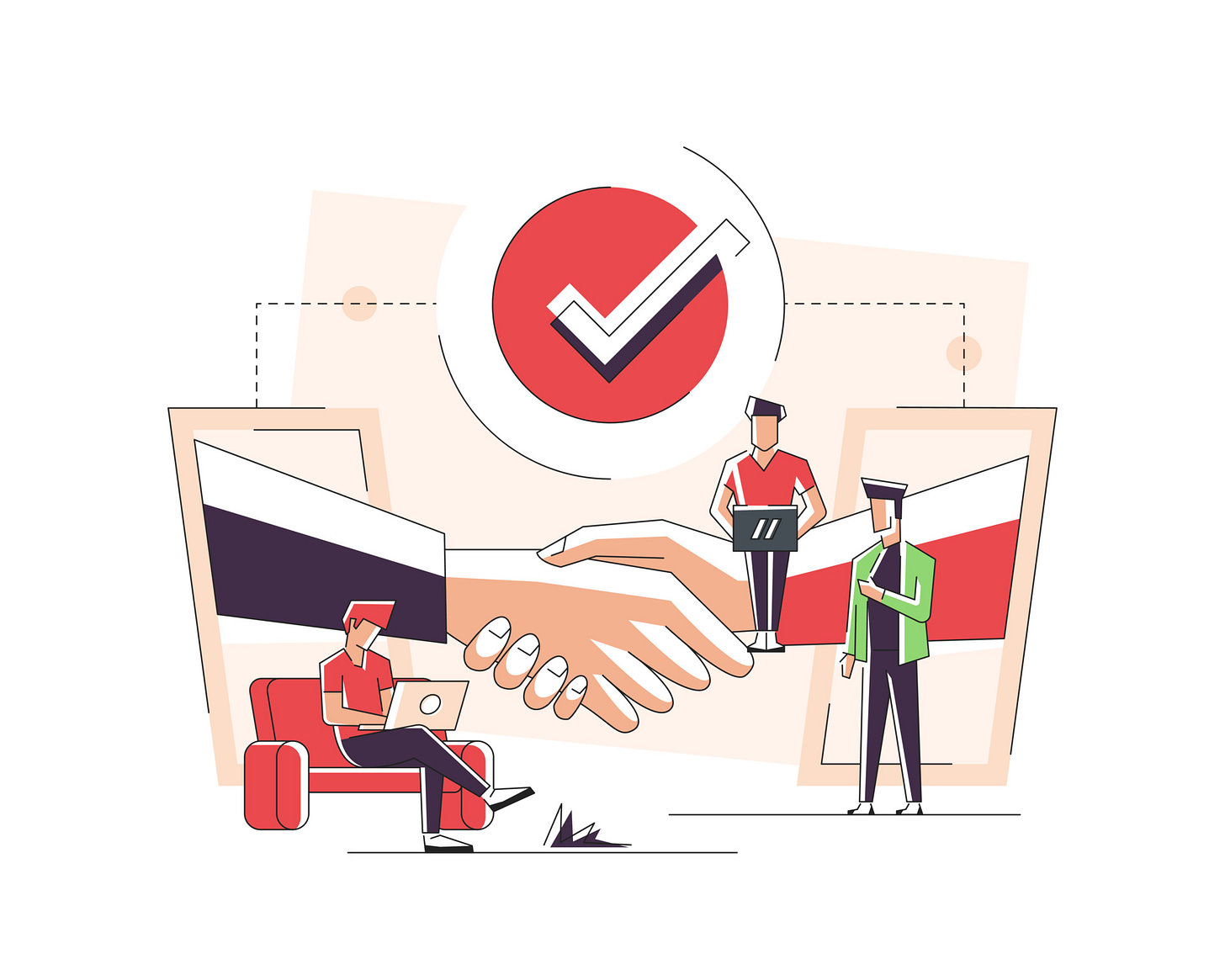Happy Friday peeps!
Joining a legacy tech brand can be a challenging experience. These companies often have rich histories and a solid reputation. As they’ve been around for much longer than, say, a startup, the challenges and opportunities they face can be very different from those faced by a ‘new kid on the block’.
I worked for such a company for several years and, in this week’s newsletter, I will delve into the key learnings derived from that experience.
Here goes….
Make sure you take your time to gel in and earn trust
One of the first and most important steps to take, when joining an established company, is to take your time to assimilate into the organisational culture. Whether formally communicated or not, these companies often boast a deep-rooted corporate culture that can be unique some might be sensitive to it. Rushing in with preconceived notions or a desire to make immediate changes might backfire and, in my case, it nearly did.
I ran into a major disagreement with someone who had been at the company for 10 years and, to a frustrating level, it seemed like this person was a rock who just refused to budge. I learned, through that experience, that building relationships and earning trust should be a priority during the initial days.
Colleagues who have been part of the company for an extended period can offer valuable insights and context. Getting to know them and their preferred communication style can take one a long way in the journey towards getting things done. I, subsequently, took time to understand the dynamics, learn about the unwritten rules, and observe how decisions are made. This foundational step paved the way for smoother collaboration and, gradually, established my credibility within the organisation.
Familiarise yourself with the journey
For anyone stepping into a pivotal role at an established tech company, understanding the historical journey is essential. One might not need to delve into the archives as such but what helped me a lot was engaging in conversations with long-time employees, and taking my time to absorb the company's narrative.
For instance, there was an entire product line that was bleeding cash and I couldn’t figure out why the company was bothering to keep it active. A meeting with the head of that division made it clear to me that the product line had been added, following an acquisition a few years back. Several existing clients, who were actively buying other products, had been migrated from the acquired company and, thus, expected the product to be supported.
Thus, in a way, the product line that was bleeding cash was actually adding to other business lines by keeping clients happy. Such knowledge provided invaluable context, enabling me to appreciate the company's triumphs, challenges, and the reasons behind its current standing in the industry.
By grasping the journey that the company had been on, I positioned myself to contribute meaningfully to the brand's future trajectory. Identifying the milestones, learnings from past mistakes and keeping all of that in context helped a lot.
Try to get a sense of the challenges the company faces
Given the history of any brand, the challenges it faces can either be unique to it or more generic. One thing is for sure though. Whether it be adapting to market changes, overcoming technological inertia, or addressing cultural shifts within the organisation, any given company faces a set of challenges. Understanding these challenges is paramount for anyone looking to make a substantial impact.
What helped me a lot was engaging with different teams, conducting thorough analyses, and seeking input from cross-functional stakeholders, including investors in the company. On a high level, one can easily get the run down by looking at the financials but each stakeholder can have their own perspective on what the core problems are and how they can be resolved.
Identifying the pain points and challenges allowed me to tailor my approach, whether it involved optimising processes, introducing new tools, or suggesting sunsetting a particular product. The approach to take input from stakeholders across the board helped a lot because that developed a relationship of trust between me and them.
Things might be outdated so be patient
One aspect that I repeatedly came across was the presence of outdated processes, technologies, or methodologies. It was extremely frustrating and navigating through these antiquated elements required patience, a strategic mindset and, to some degree, empathy. Rather than hastily pushing for immediate change, it's essential to assess the impact and devise a thoughtful plan for modernisation.
Understanding the reasons behind the existing processes and systems is probably a good first step. Evaluating the risks associated with sudden changes is very important because what might make sense on paper might be extremely painful to implement, especially if you have entire teams that are used to the existing way of working. A patient and systematic approach ensures a smoother transition, minimising disruptions while fostering a culture open to innovation.
I, for instance, was assigned to a team that was responsible for implementing a new ERP system. Because I had developed a good understanding of the shortcomings and limits that the existing system placed on us, I went about making presentations tailored to each stakeholder group. Each presentation explained how the new system was going to affect the specific stakeholder group that I was presenting to and highlighted the benefits it would bring. Furthermore, I made it a point to gather as much feedback around concerns and addressed them throughout the process.
Take it as a given that you will meet resistance
In any organisation, change can be painful. Thus, resistance to change is a common challenge which can be particularly pronounced in legacy tech brands. Employees, especially Long-standing ones, often might get attached to established ways of working, and any hint of alteration may be met with skepticism or pushback.
As already explained, I did have to face my fair share of resistance when I took up the role. That experience made me realise that anticipating this resistance and developing strategies to address it is crucial. I may be repeating myself here but communicating transparently, emphasising the benefits of proposed changes and addressing concerns with empathy are some of the approaches I took up to mitigate resistance.
Thus, establishing a culture that values input from all levels fosters collaboration and helps overcome resistance more effectively. It ultimately comes down to trust!
Get early buy-in with the relevant leadership team
In order to driving significant changes at a legacy tech brand, gaining the support of the leadership team is indispensable and can clear a lot of hurdles that would, otherwise, tie anyone down. Early buy-in from the senior management not only accelerates the implementation of strategic initiatives but also provides a strong foundation for successful execution.
I encountered a lot of cynicism when I started working with the commercial team. Many of them had been in the business for over a decade and things got off to a rough start when I had my very first 1-1 meetings with them. “So, what experience do you have with our industry?” is a question I was often asked and the moment I responded with, “I don’t have much experience there, but….”, I noticed the expressions change to frowns or chuckles. Furthermore, I encountered people who just weren’t keen on cooperating with me. For instance, I asked (and reminded) them to update the CRM system by the end of the week (and this was a Monday) and while I got nods when during my conversations, it just wasn’t done.
In such situations the need for buy-in from the leadership is highlighted. I could sit back and hope that the commercial team would eventually come around but that would have taken weeks, if not months, which would result in weeks/months of poor data and flakey tracking. I, thus, approached my Line Manager and, well, as he was the President of EMEA, the commercial team reported to him as well. I described the situation to him over a meeting and explained how we would not be able to generate a robust forecast without the team complying. Minutes later, an email went out from him and a ‘special’ phone call for those who were way behind. The next day, everything was in order :).
Establishing alignment with the leadership team ensures that one’s efforts are aligned with the overall ambition of the company. This collaboration also facilitates smoother decision-making processes, minimising delays in implementing critical changes.
Pick your battles wisely
The need for driving positive changes is a perpetual one but not every battle is worth fighting. Legacy tech brands, as already pointed out, often have deeply ingrained practices and traditions and attempting to challenge every aspect may lead to frustration, burnout and resistance.
Thus, in my experience, prioritising initiatives that are time critical and align with strategic business goals is the way to go. Assessing the feasibility and potential outcomes of each battle and, subsequently, focusing on areas where change can be most transformative is the way to go. A strategic and measured approach can allow one to make a meaningful impact without overwhelming oneself or the organisation.
Enjoy the challenge…if its your thing!
The challenges, sensitivities and nuances of a legacy tech brand can be overwhelming. However, for those who relish a challenge, it presents a unique opportunity for professional growth and is a test of endurance.
Approaching each day with a positive mindset, viewing challenges as opportunities to making a lasting impact is the approach I took. I embraced the complexities, learned from setbacks, and celebrated victories, no matter how small. The satisfaction of contributing to the evolution of a storied brand is a reward in itself, and those who find joy in the journey will find the experience truly fulfilling.
For me, I enjoyed it for a few years but then I needed a new challenge.
In any case, I learned a lot!
Hope you enjoyed going through this newsletter. Thanks for sticking with me :)!












Can relate. Can we talk about how these cultures got so pernicious and why they continue to be so, though?
For org's that often tout their "flat corporate hierarchy," those who have survived inside them know that inside its mostly about territorialism, ego management, and reducing risk.
A conversation about how things came to be so, why they continue to be so, and what are the blockers to those things changing would be impactful imo. As a 15 year vet who has seen the industry dramatically change, I have my own beliefs about it.
Lots of useful advice in this piece, Naush! Thank you for sharing your wisdom.